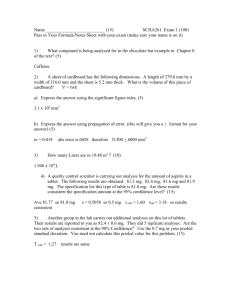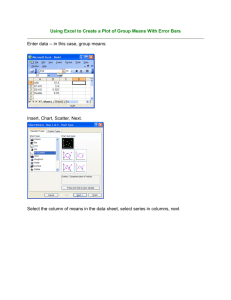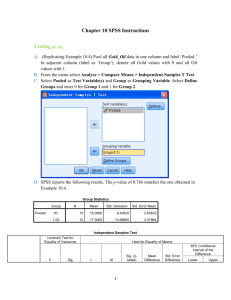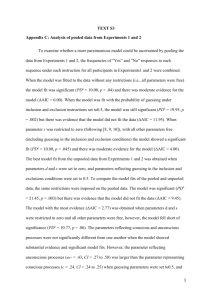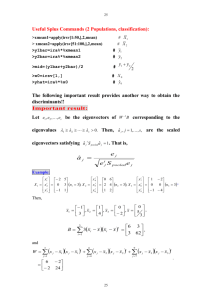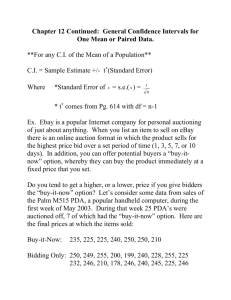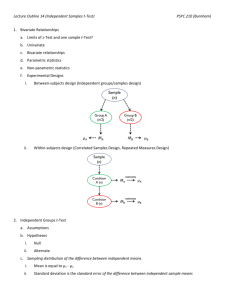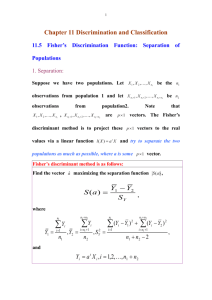HOW TO INVEST IN POOLED FUNDS by
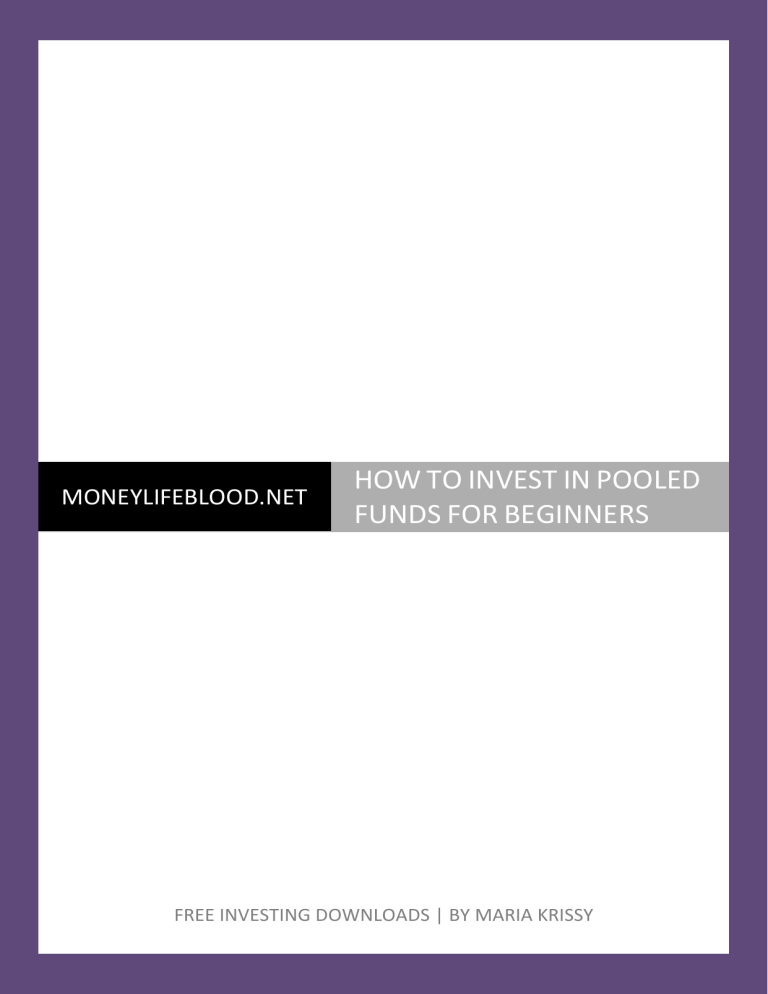
MONEYLIFEBLOOD.NET
HOW TO INVEST IN POOLED
FUNDS FOR BEGINNERS
FREE INVESTING DOWNLOADS | BY MARIA KRISSY
Welcome to the world of pooled funds aka mutual funds and UITFs! :)
Investing in pooled fund is sooo easy!
This mini ebook is divided into 6 easy-to-learn sections:
Before we even start a discussion on how to invest in Philippine pooled funds, here’s a simple checklist to ascertain if you are prepared for this crazy adventure!
Before-You-Start-Checklist:
Do you have an emergency fund worth 6 months of your gross monthly income?
Do you know what kind of investor you are? Are you conservative, moderate or aggressive investor ?
Do you understand the risks involved ?
Now, let’s start the ball rollin’!
1.
What are pooled funds?
It is pooled money from perhaps other unknown investors (you’re identity will not be divulged to other investors) by the investment company, usually a bank or an institution.
Together, money from different people form a big investment chunk which is then invested into different investment products (stocks, bonds, fixed income deposits, special deposit accounts, government issued bonds, corporate bonds, etc).
A fund or portfolio manager manages the fund. Goal of the fund manager is to grow this big chunk of money to satisfy the investors (which could be you). Fund managers are professionals with known expertise of the market.
You can open for as low as Php5,000 as initial investment and top-up your existing shares with as low as Php1,000 depending on the mutual fund company. This means very low capital is required to get started :)
Krissy, are pooled funds guaranteed by PDIC? Answer: It is NOT covered by
PDIC (Philippine Deposit Insurance Corporation). High risks, high returns as the old adage
Visit MoneyLifeBlood today! :) 2
says. With mutual funds, investment risk is higher compared with traditional savings deposits. But the rewards may be greater :)
Look at this real-life example later to show you how it can be effective to invest in pooled funds for a long time. See how he became a millionare! :)
If you want more information about pooled funds, you may read my article here .
What is the difference between mutual funds and UITF?
A pooled fund can be in a form of mutual fund or UITF. They have similar features, but also differences as shown in the below table:
About
Nickname
Guardian
What you buy
Managed by
Price of the fund
(Php)
Sold by
Charges
Mutual Fund
MF
SEC
Shares
Mutual fund companies
NAVPS = Net Asset Value Per
Share
Licensed mutual fund agents
1. 1%-5% sales charge
2. 0.5%-3% redemption fee
3. 1%-2.5% investment advisory, distributor and administration fees
Unit Investment Trust Fund
UITF
BSP
Units
Commercial banks
NAVPU = Net Asset Value Per
Unit
Authorized bank employees
1. 0%-2% sales charge
2. 1%-2% redemption fee
3. 1%-1.5% trust fees
As an example, Philequity manages a mutual fund called Philequity Fund , while Banco de
Oro manages a UITF called BDO Equity Fund. :) Philequity Fund requires a minimum investment of Php5,000 while BDO Equity Fund will require a minimum investment of
Php10,000. To know more about the differences among funds you wish to invest in, check out websites and visit branches. Make sure you talk to the representative knowledgeable about these investments :)
2.
Why invest in pooled funds?
Here are the advantages of investing in pooled funds:
• Low Investment – For a minimum Php5,000 you can already start investing in a pooled fund! It’s that easy! :)
• Diversification – Diversification as the name suggests is a strategy used to spread your risks across different investments. Investments vary in risks, that is why it is not wise to put all your hard-earned money in one basket of investment. A fund itself diversifies its investment, since it can invest in a variety of stocks. For the investor like you and me, we can choose different kinds of pooled funds which we will discuss
Visit MoneyLifeBlood today! :) 3
later, depending on your objectives. TIP: Even before you start investing, you should know by yourself your financial objectives.
• Liquidity – Pooled funds can be withdrawn anytime, subject to fees deduction. TIP: It is best to keep your pooled funds for more than the specified period suggested by your fund manager to be free from any deductions. Check with your fund manager on the period required.
• Professional Management – The best fund managers in the country grow your money. You don’t need to time the market or do your own stock-picking if you’re not comfortable doing it on your own. Leave it to the experts!
• Top up min Php1,000 – For as low as Php1,000 you can add existing shares to your pooled fund.
• Transact and Monitor Online – This is my favorite advantage: I can enroll my fund’s bank account to my online bank facility and transact online. I can monitor the growth of my money online. It’s a lot convenient :)
•
What is peso cost averaging?
Source: BPI Asset Management
Cost averaging is a well-loved strategy as shown in the above illustration. For a more detailed explanation, check out this related post :)
3.
Why NOT invest in pooled funds?
What are the disadvantages of investing in pooled funds?
• Costs – Since fund managers do their job of managing our money, they have to be paid with professional fees. If you think you can outsmart the fund managers and handle money better, then you don’t need to invest in pooled funds.
Visit MoneyLifeBlood today! :) 4
• Uncertainty of returns – #walangforever won the hearts of many as this hashtag is commonly known to this generation. While historical performance of pooled funds may reveal impressive gains, nothing is guaranteed in the future. Returns are all uncertain.
• Lack of control over management decisions – You cannot call up your fund manager and say “Hey, buy Jollibee!” Fund managers have direct control over how they will use your money. You cannot tell them what to do.
• Not covered by PDIC or BSP – As mentioned, pooled funds are not guaranteed by
PDIC or BSP.
4.
What are the different kinds of pooled funds?
To date, there are four (4) different types of mutual funds in the Philippines: stock funds, bond funds, money market funds and balanced funds .
You need to know your risk profile or risk appetite to determine which fits for you. Because of the different types of available mutual funds, it is advised that you know what is right for you :)
Bond
Bond funds are designed for retirees or those whose risk appetite is conservative.
Money Market
Money market funds typically are fixed income securities, but with term one year of less.
Balanced funds contain both equities and bonds.
Balanced
Stocks
Stock funds or most commonly known as equity funds are designed for highrisk takers.
To know more about the different kinds of pooled funds, check out related article here .
In the next section, you will learn the different risk profiles of an investor. This also applies in choosing other available investments such as bonds, stocks, time deposits, global funds, corporate notes, etc. TIP: Take time to reflect what kind of investor you are.
Visit MoneyLifeBlood today! :) 5
What is my risk profile?
Source: BPI Asset Management
For strategies and tips, you can use: STRATEGIES LINK .
5.
How do I invest in pooled funds?
Read prospectus online. It is suggested that you know what you are investing in.
Once decided, go to a mutual fund company or a commercial bank (e.g. Philequity,
Sunlife, BPI, BDO, Cocolife, ATR Kim Eng, etc).
Fill out investment forms, signature cards and submit valid IDs. TIP: It is advisable that you have 2-3 government IDs as reference.
Make investment through cash, check or deposit to account.
Do you want to know the game plan on pooled funds investing? See IMPORTANT LINK .
6.
How do I monitor my investments?
Monitor performance of funds on a regular basis. You may keep a copy of statements which will be sent to you via courier or email. I do keep an excel file where I log the latest monthly and year-end returns.
For mutual funds, visit http://www.pifa.com.ph
.
For UITFs, visit bank websites and branches or visit http://www.uitf.com.ph
.
Visit MoneyLifeBlood today! :) 6
In the above table, you can check out the YTD Return % column. This refers to the return of one particular fund, supposed you have invested at the start of the year. In the above example, if you have invested in ATR Kim Eng Equity Opportunity Fund early in 2012, by
June 2012 your investment is already earning a whopping 16.6% gain! Wow! :)
This ends our quick learning on pooled funds. Hope you had fun reading this ebook! :)
Did you enjoy this ebook?
Share with friends and start your journey together!
Got questions? Email krissy@peraholic.com
.
Still lost?
Email krissy@peraholic.com
.
Do you want to receive more tips and strategies from me on various investments? Subscribe for free here . (You will be directed to a site to log your email address. I will not share with anyone your private contact details :)
Thank you for reading this ebook! :)
Krissy
P.S. Always check the latest posts at MoneyLifeBlood ! :)
#FilipinoFinancialFreedom #EveryFilipinoDeservesToBeFinanciallyFree
P.S. Do you want to have a ultimate cheat guide to personal finance? I’ll be launching
NEWBIE 101 Book
– a practical guide to saving, investing and money making. Pre-order now! To pre-order, deposit Php500 to BDO IDEA SCHOOL 00836004985 . Visit this post for more details.
Join the Filipino Financial Freedom Forum and be with like-minded people who talk about stocks, mutual funds, UITFs, business, money management tips, trading strategies and more. Download free ebooks and resources here!
Like us on Facebook! Moneylifeblood
Add me up on Facebook! @moneylifebloodofficialblog
Wanna follow me, the financial blogger? Follow me on Twitter @moneylifeblood
@krissydomingo IG @tinkerbell_krissy FB @moneylifebloodofficialblog
Visit MoneyLifeBlood today! :) 7
